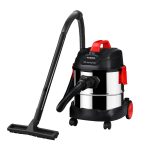Last Updated on February 12, 2023 by
What distinguishes “fiction” from “nonfiction”?
Literature written from the imagination is referred to as “fiction.” Examples of famous literature include Harper Lee’s To Kill a Mockingbird, Charles Dickens’ A Tale of Two Cities, George Orwell’s 1984, and Jane Austen’s Pride and Prejudice. All fiction genres include mysteries, science fiction, romance, fantasy, chick-lit, and crime thrillers.

Nonfiction literature is described as being based on facts. It covers the broadest range of literary works. The library’s nonfiction section offers books and videos in various subject areas, including humor, business, self-help, true crime, science, health and fitness, pets, crafts, home décor, languages, travel, and home improvement.
Write a Non-fiction Book in just 30 Days
I’d say that I think writing a nonfiction book is among the most pleasurable and rewarding things you can do. I’ve long believed that everyone is creative in some way and that everyone has a voice. It makes no difference if that voice wishes to build on a nonfiction idea or present a fictitious story. A book is a portion of your thoughts that have been translated into words that the reader will later experience as intense emotions. It’s an incredible feeling.
When I first started writing fiction, I had no idea how to write a nonfiction book. I spent roughly 30 days working on those books’ early drafts, so I thought I’d share my method and how I managed to make it work. I sincerely hope this post will be helpful to you and motivate you to begin writing your nonfiction book.
Set a calendar and develop discipline.
In line with ghostwriting agency Make a note of your writing schedule on a calendar, basing it on the outline and the research that will be necessary. Take notes whenever necessary to help you better manage your time and become more productive. It takes extraordinary self-discipline and hard work to write a book, regardless of the time. When you consider the fact that a nonfiction book may be written in a month, this becomes of the utmost importance. You need to have a solid writing habit, which means producing a comparable quantity of words every day, with no exceptions. This is something you need to do in addition to having pure discipline.
Determine the total number of words.
While a suitable length for an ebook can be anything from 10,000 to 25,000 words, the typical range for the number of words in a trade paperback begins at 30,000 and goes up to 75,000. Decide as soon as possible, and then stick to it.
Write the thesis statement.
Be specific with your thesis statement. It simply states the topics and issues the book will address. This statement should preferably contain the underlying issue and a high-level overview of the solution offered because most, if not all, nonfiction works offer solutions to problems.
Write the outline.
Once you’ve established your thesis, you can quickly write an outline. The most often used structure in journalism is what-who-when-where-why-how. Use this when creating the outline. Cover at least these six components. The “why” and “how” are most likely lengthier than the other four parts.
Freely compose your draught work.
First-draft writing should be done freely without feeling pressured to write flawlessly since nobody can. Even the best authors out there cannot write. Within the limitations of the outline, let your thoughts wander. You won’t ramble on about irrelevant topics if you do this.
Check, adjust, then rewrite
Every writer revises their work. Particularly when it comes to popular topics in nonfiction publications, you are not writing something that hasn’t been published before. There are probably tens or hundreds of articles about efficiency that have already been written. All you need to do is take a different tack and propose fresh ideas.
Work together with an editor.
There are several book editing specialities to consider, including developmental editors, line editors, copy editors, and proofreaders. Learn about them since each of them has specific responsibilities.
You must need a human developmental editor if you’re a rookie author. To aid in redrafting, you may also utilize the ProWritingAid software.
Select your publication strategy.
Amazon KDP (Kindle Direct Publishing), which allows you freedom and control over the manuscript file, is an excellent option if you want your book published immediately after editing. Before you begin, though, ensure that you have a solid marketing strategy.
Publish and advertise.
When you self-publish your book, you should do a joyful dance when the finished manuscript is uploaded to the system. But promoting it is another story. Additionally, since many authors are introverts, they discover that marketing their work is far more difficult than actually authoring the book.
You must be prepared to appear online and in-person as the author, whether you are the publisher or a traditional one. Engage in some reading, be active on social media, and distribute free copies. Of course, you may collaborate with book publicists and social media managers if you have the funds. You must, however, handle a face-to-face book signing and reading on your own.
Conclusion
Writing and publishing a nonfiction book in thirty days is unquestionably feasible. You will, however, need to carefully plan out your calendar, your thesis, the execution of your project, as well as the publication and advertising side of things in preparation. Take careful notes on each activity, as the degree of success the book will depend on these.
Apart from this if you are interested to know more about An unbiased guide to fix the QuickBooks error code 6000 then visit our Education category


























